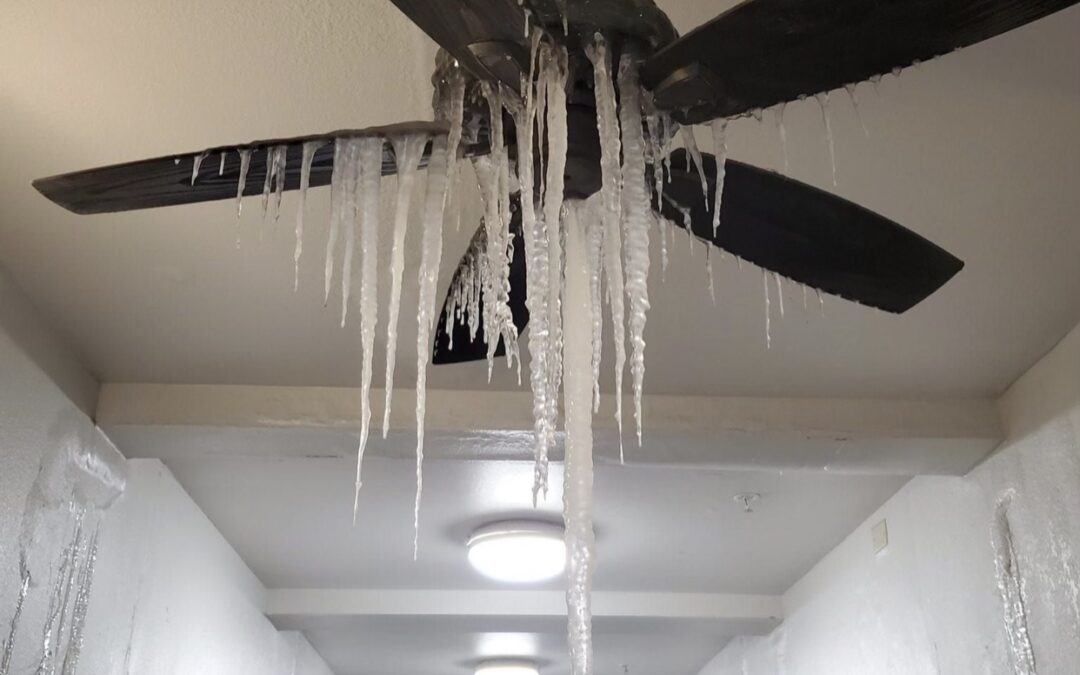The pipes were frozen and when they thawed, they leaked everywhere. What now? What should you do next? Dog Gone Mold recommends, after you have called your insurance company and taken lots of pictures, that you start by drying things up.
After the source of the water has been fixed, use mops, towels, and blankets to soak up the excess water. Aerate the space as much as possible. Run a fan. Clean up all the standing water you can access. Water likes to travel into particle board and drywall. If you cannot access it but you know it is there, call a restoration or remodel company and get professional help.
The biggest no no? DO NOT USE BLEACH! A solution of vinegar and water is a lot more effective in killing mold and deterring growth and it does not harm the surfaces like bleach does.
The longer the water sits and soaks in the more likely it is to do long term damage. Mold needs moisture and warmth to grow. You might be thinking because it is cold outside that mold will not grow. However, your home is warm. Mold grows in 60 degree or higher temperature. So, if you keep your house warm and you have moisture hanging out it is highly likely that mold will start to grow
Do not overlook cleaning your HVAC system and air ducts after you have had a water event clean up in your house. Dog Gone Mold thinks of mold like we think of roaches. If you see one roach, you know there are lots most likely hiding somewhere nearby. If you see a bit of mold spots on your cabinets, floor boards, dry wall, vents, there is a good chance there is lots of mold hiding behind.
The best practice is to have Dog Gone Mold inspect your home. Mold that has started to grow needs to be identified and cleaned quickly. Contact us for your mold assessment today. We can schedule you in, especially if you mention reading this blog.

